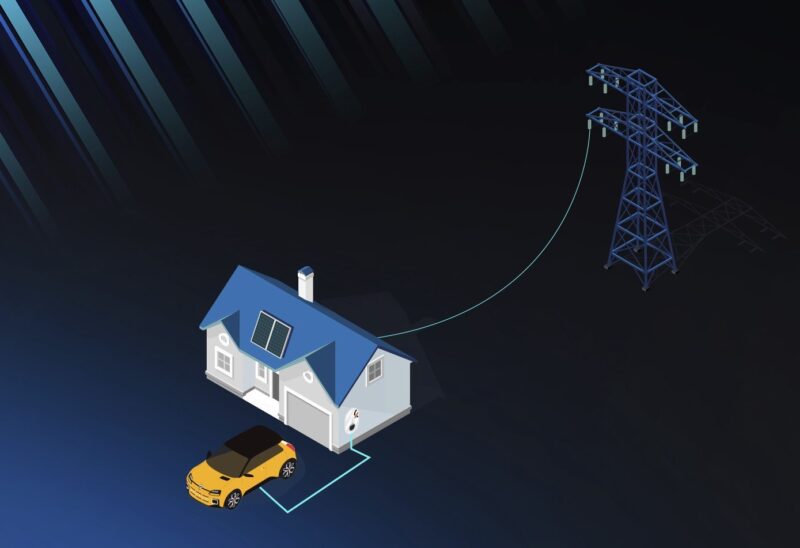Australia is being bogged down in the rollout of vehicle-to-grid (V2G) products for electric vehicles because of design problems, and unrealistic expectations about the potential revenues from grid services, according to one energy expert.
“We are very, very far behind that journey and the way that we’re racing to catch up is not creating the market outcomes that we require,” Greenergenic cofounder Riccardo Pagliarella said at the Power and Utilities conference in Melbourne on Wednesday.
Pagliarella cited a report in February by the Australian Renewable Energy Agency (ARENA) that suggested a fleet of EVs used to supply Frequency Control Ancillary Services (FCAS) to the National Energy Market (NEM) could generate revenue of up to $12,000 per vehicle in a single year.
“We have had some certainly inflated values for the potential of vehicle to grid, like 13 grand a year for a Nissan LEAF,” Pagliarella said.
“I don’t know who signed that off, but I’ll tell you what, for anyone that works in the energy industry, it’s certainly wasn’t the trade desk of any company that’s registered to trade in Australia. There is no one that will give you six figures worth or four figures even worth of FCAS out of a grid-connected car. It just doesn’t exist.
“And these things don’t get out of bed as fast as stationary batteries and they are not doing virtual inertia…. They’re not going to be valued as high without a shift in underlying policy that says, we’ve got all these cars, we’re going to do something with them.”
Pagliarella believes that making claims around FCAS options when the market design, underlying policies, and supporting regulations are not even in place is not the right starting point.
“We need to get hard and fast, and then we can talk about do we have net value enough to transfer something tangible to consumers?”
The new range anxiety
A lot of education needs to happen in the interim as well, given how late Australians have come to EVs compared to markets such as New Zealand.
Australians, whether they are individuals who own an EV or fleet operators, think V2G is great for someone else, says ANU Battery Storage and Grid Integration Program analyst Laura Jones.
Most Australians think of the technology as vehicle-to-home, with their car operating as a home battery rather than grid support.
Jones has run V2G pilot programs and says Australians worry about whether a grid-connected car will mean they can still use their vehicle as a car — in that it will be charged enough to get them to where they wish to go.
The Realising Electric Vehicle-to-Grid Services (REVS) project showed that for fleets, a lot of value can be gained even if only a small percentage of the cars were used for V2G, because the battery availability from fleets is high.
“The grid is as much a customer of V2G as drivers are,” Jones says, and it also wants certainty of supply. Asking individual EV owners to offer grid services via V2G would require a major behaviour change, given most people don’t plug their car in everyday, just when they need to refuel.
Jones is confident it can work “but it’ll be a long journey with consumers” given the concerns about certainty of charge.
Power the pizza oven when camping
Australians might be leery about turning their own car or fleet over to V2G, but there’s little they can’t imagine other people doing with it, Jones says.
Some of the blue sky ideas that have been suggested during Jones’ research include using EVs as a backup distribution system, such as at a one-off high energy use event like a music festival.
Charging at work and using the car to power an off-grid house is one grid “death spiral” idea, while vehicle-to-load during blackouts — or to power a glamping site — is another use case, Jones says.
Internationally there are already pitches to use V2G in car parks to pay for parking.
No presence on standards
Australia is also absent in the development of international standards such as the Open Charge Point Protocol (OCPP) which is allows EV charging stations to talk to a central management system, Pagliarella says.
It means few people in Australia know anything about the development of these global standards or are involved in making them, which is a problem given V2G was first demonstrated 22 years ago by AeroVironment and AC Propulsion in the US.
Development of standards to governing how V2G would work began in 2012. The Australian Energy Market Operator (AEMO) issued key findings from a taskforce on V2G integration standards in 2021, but has not moved the conversation forward since.
“Australia was not a part of it. We have no part of it. We have nothing to do with it. So when we try and talk to policymakers about, hey, we need to do this because we’re likely to inherit, by virtue of the cars that come to market, charging infrastructure that will be able to do all this sort of stuff. We have no answers,” Pagliarella says.
Although Australia is a world leader in residential solar and home energy management systems, without its own standards for EV chargers that are able to offer V2G vendors here can’t tell companies overseas what those are and the result is substandard or poorly adapted equipment to the local market, he says.

Rachel Williamson is a science and business journalist, who focuses on climate change-related health and environmental issues.

